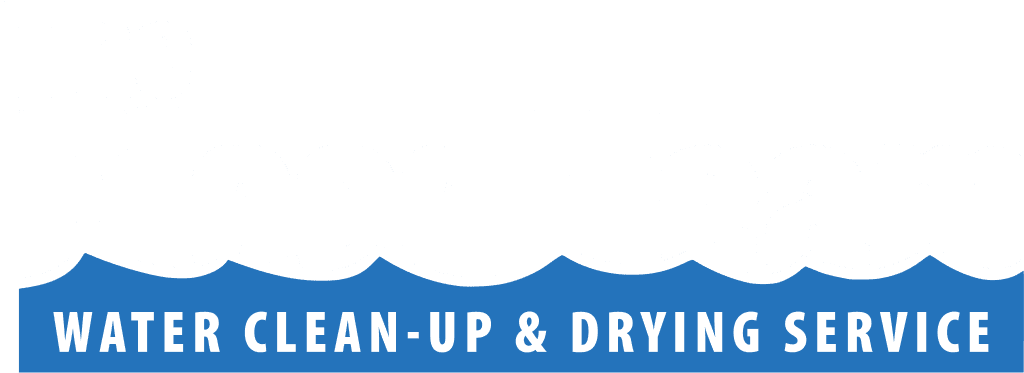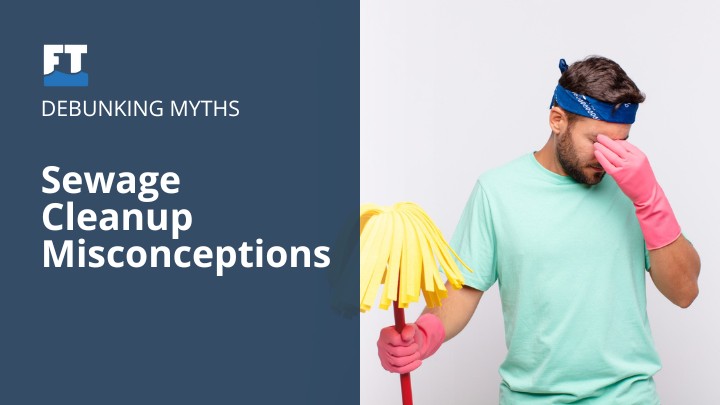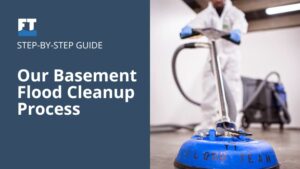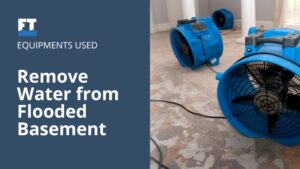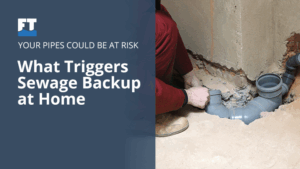When people think of sewage cleanup, most imagine a quick rinse, maybe some bleach, and moving on. But the truth? It’s far from simple, and believing otherwise can lead to serious health risks, property damage, and costly mistakes. The reality of sewage cleanup is often misunderstood, especially when panic sets in and decisions are made fast.
In this blog, we’re unpacking the common misconceptions about sewage cleanup, the myths that make a messy situation even worse. Whether you’re dealing with a backup, a burst pipe, or just want to be prepared, understanding what’s fact and what’s fiction can make all the difference.
What People Get Wrong About Sewage Cleanup
Myth #1: “I can clean it up myself.”
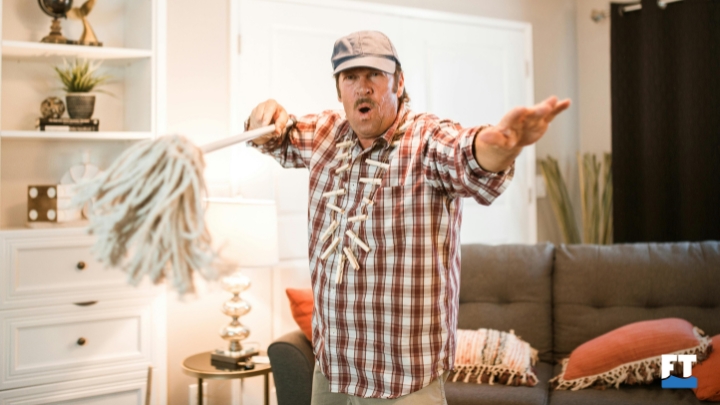
Sure, it sounds simple. Wipe everything down, apply some disinfectant, and call it a day. But sewage backup is a health hazard, and not just dirty water. It’s filled with bacteria, viruses, and parasites that can make you sick. We’re talking about things like E. coli, hepatitis, and other pathogens you don’t want anywhere near your home or family.
Professional sewage cleanup crews use protective gear, industrial-strength cleaning products, and equipment most people don’t have at home. They know how to safely remove contaminated materials, dry affected areas, and prevent mold growth. Trying to do it yourself can expose you to serious health risks, and you might miss hidden damage that gets worse over time.
Myth #2: “Toilet paper is the only thing that should be flushed.”
That sounds like good advice, right? But here’s the problem: people often think things labeled “flushable” are safe, too. Flushable wipes? Not so much. They’re a common cause of sewage backup because they don’t break down easily and can block your pipes.
Other items to never flush include paper towels, feminine hygiene products, diapers, and cotton swabs. Even dental floss can cause issues over time. These things don’t break down like toilet paper does, and they often get stuck in pipes or septic systems.
Myth #3: “Chemical drain cleaners solve everything.”
Got a clog? Just pour some liquid drain cleaner in there. It’ll fix it. Or so people think. But chemical drain cleaners can be more harmful than helpful. The truth is, most chemical drain cleaners are corrosive. While they might break down minor blockages, they can also eat away at your pipes, especially if you’re using them frequently. That can lead to leaks, burst pipes, and even full system failures.
Instead, pros use safer and more effective methods like hydro jetting or snaking. These remove blockages without damaging your plumbing. And if your clog is being caused by something like tree roots or grease buildup, chemicals won’t help at all.
Myth #4: “Septic system additives mean you don’t need pumping.”
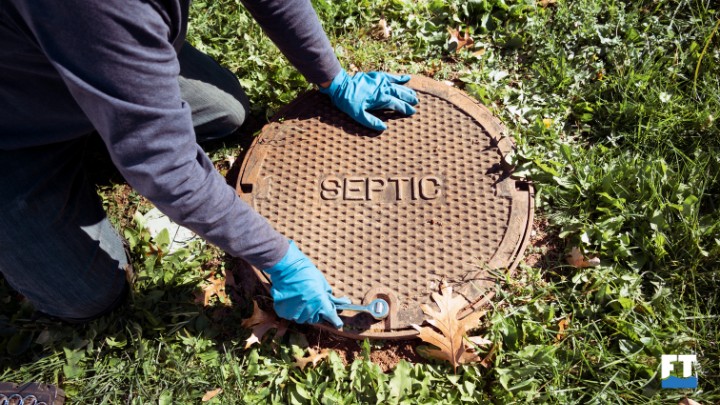
You’ve probably seen septic tank additives advertised as maintenance-free solutions. While they might help a little, they’re not a substitute for regular pumping.
Over time, solids build up in your tank. No additive can break down everything. If you skip pumping, solids can overflow into your drain field or back into your home, potentially leading to the need for professional sewage cleanup services to address a messy and hazardous situation.
Myth #5: “Onsite wastewater systems aren’t for small facilities.”
This used to be more true than it is now. Today, newer onsite systems are compact, efficient, and more affordable than they once were. Small businesses and homes without access to municipal sewer lines have options that can work well, as long as they’re installed and maintained correctly.
Why Facts Matter?
Sewage damage cleanup is not something you want to guess your way through. Believing in myths might feel harmless, but in reality, it can lead to health hazards, long-term property damage, and major plumbing bills.
Calling in the right sewage cleanup experts, practicing safe flushing habits, avoiding chemical shortcuts, and sticking to regular maintenance can make a huge difference. Clean water, safe homes, and working plumbing systems depend on facts, not shortcuts.
If you ever face a backup, don’t wait. Acting fast (and smart) can prevent bigger problems down the line.
Don’t Let Sewage Myths Cost You—Get Expert Help Now
The truth is, sewage cleanup requires certified professionals with the right tools and training. That’s why The Flood Team is available 24/7 to respond fast, clean safely, and restore your space correctly.
Book a free evaluation and let our experts take the stress off your hands. We’re here around the clock to help protect your home and your health.
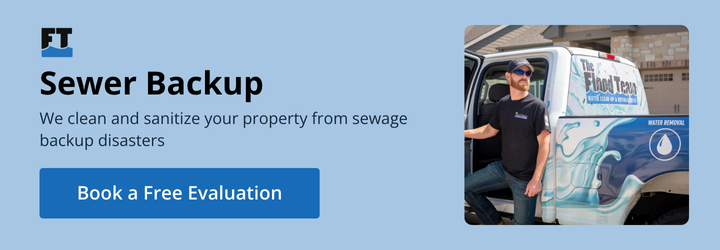
Final Thoughts
Believing common misconceptions about sewage cleanup can lead to risky decisions and bigger messes. Whether it’s assuming you can DIY a hazardous situation or relying too much on chemical cleaners, misinformation often causes more harm than good. If you ever face a sewage issue, play it safe. Call professionals who can handle the mess right the first time. And if you’re unsure what caused the problem or how to prevent it, ask questions—it’s better than learning the hard way.
FAQs
Is bleach enough to clean up sewage at home?
Nope. Bleach might kill some bacteria, but it won’t remove all the harmful stuff in sewage. And without proper protection, you’re putting yourself at risk.
Are “flushable” wipes actually safe to flush?
Not really. Most of them don’t break down like toilet paper does. They get stuck in pipes and cause clogs.
How often should I pump my septic tank?
Most homes need it every 3–5 years, depending on usage and tank size. It’s better to schedule regular maintenance than to wait for problems.
Can I use chemical drain cleaners regularly?
It’s not a good habit. They can corrode your pipes and damage your septic system. If you have recurring clogs, call a plumber.
How do I know if I need professional help with sewage cleanup?
If there’s black water, strong smells, or anything touching carpet, drywall, or insulation, it’s time to call in the experts.
